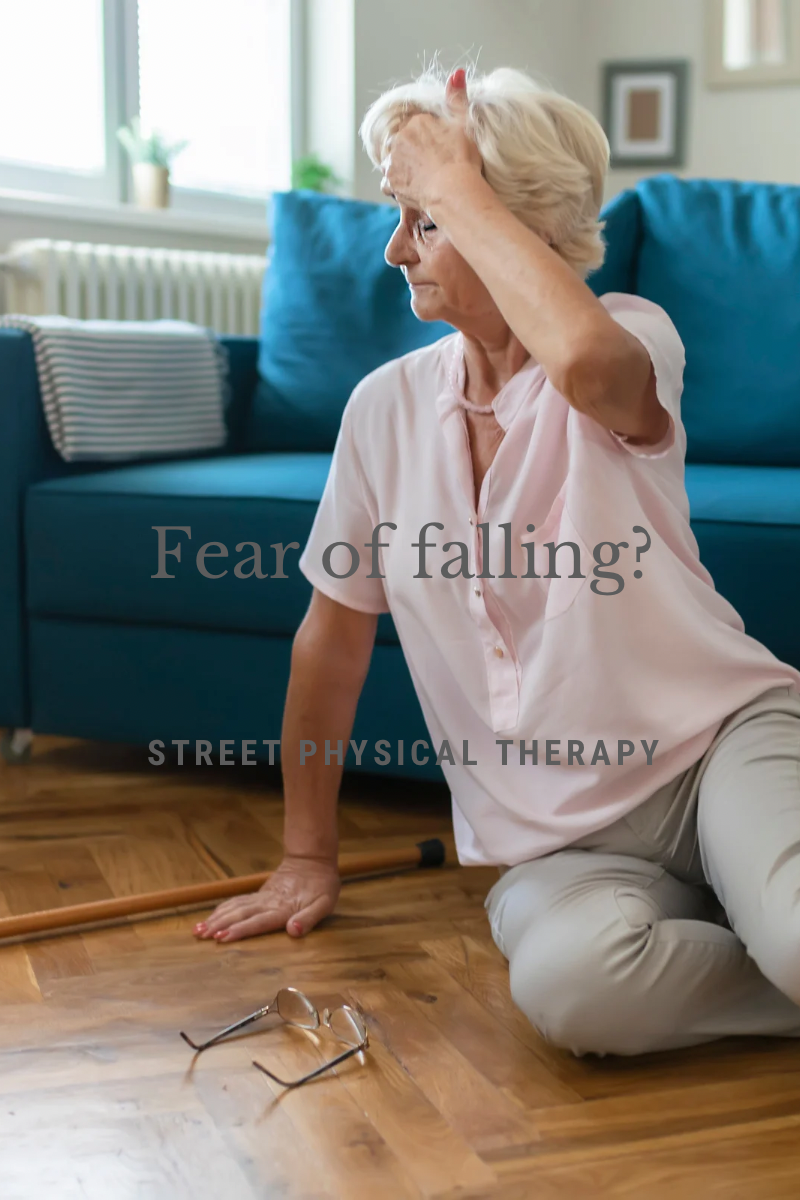Experiencing a fear of falling at home?
Overcoming the Fear of Falling: How It Impacts Falls and What You Can Do About It
As we age, many of us experience a fear of falling. It’s a completely natural feeling, especially when you’ve seen or heard of others who have had a fall and struggled to recover. But what a lot of people don’t realize is that the fear of falling can actually make the risk of falling worse. It’s a tough cycle to break, but with the right support, like physical therapy, you can regain confidence, improve your mobility, and maintain your independence at home for years to come.
The Fear That Grows
Let me tell you about Linda, a woman in her early 70s, who started noticing that she was becoming more hesitant in her movements. She didn’t want to admit it, but after a close call where she nearly tripped on a rug in her living room, she started feeling more and more anxious about falling. Every time she stood up or took a step, she felt a little more unsteady. Her fear began to control her.
Linda’s fear didn’t just stop her from moving around confidently. She started avoiding certain activities she used to enjoy, like going for walks around the block or even climbing stairs. And when she did move around, she found herself walking slower and shuffling her feet, hoping to avoid a fall. Ironically, all of this made her more vulnerable. When you’re constantly afraid of falling, you might limit your activity, which can cause your muscles to weaken, your balance to deteriorate, and your confidence to plummet.
It’s a vicious cycle. The more you avoid movement out of fear, the more likely a fall is to happen.
The Fear of Falling and Its Impact on Falls
The fear of falling doesn’t just make you feel anxious—it actually changes how your body moves. When we’re scared, we tend to be more rigid and cautious, which can actually throw off our balance. Instead of walking naturally, you may begin to shuffle, lean forward, or take smaller, less confident steps. These changes in movement make you more likely to trip or lose your balance.
Plus, when you avoid certain activities, you aren’t challenging your muscles and balance. This can lead to weakened muscles, which makes it even harder to stay upright. So, the fear that started out as a natural response to a close call can end up making falls more likely over time.
Physical Therapy: A Key to Breaking the Cycle
The good news is that physical therapy can help break this cycle and build back your confidence. Working with a physical therapist, like the experts at Street Physical Therapy PLLC, can help you safely regain strength and balance, which is essential for fall prevention.
Physical therapy isn’t about pushing you to do things you aren’t ready for; it’s about meeting you where you’re at and helping you progress at a pace that’s comfortable for you. For example, therapists can teach you exercises that strengthen your legs, improve your posture, and increase your range of motion. With these exercises, you’ll be able to stand taller, walk more steadily, and move more confidently.
Not only will physical therapy help you feel steadier on your feet, but it can also address the mental side of falling. As you progress, you’ll start to feel more confident in your abilities and less afraid of potential falls. This boost in confidence can be life-changing. It allows you to get back to doing the things you love, like going for walks, gardening, or even just moving around your house without worry.
Living at Home Longer, Independently
One of the biggest benefits of overcoming the fear of falling and improving your mobility is that you can stay in the comfort of your own home longer. Maintaining strength and balance means that you can continue to move around your home without assistance, which is key to maintaining your independence.
For many people, living independently in their own space is one of the most important aspects of aging. With physical therapy, you can reduce the fear of falling, improve your physical function, and keep your ability to live at home—where you feel safe and comfortable.
